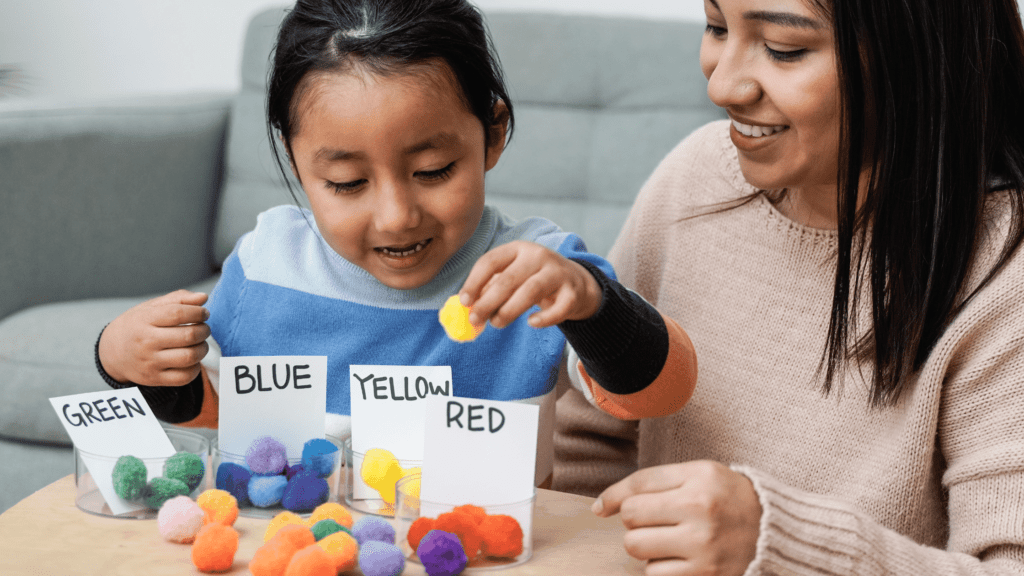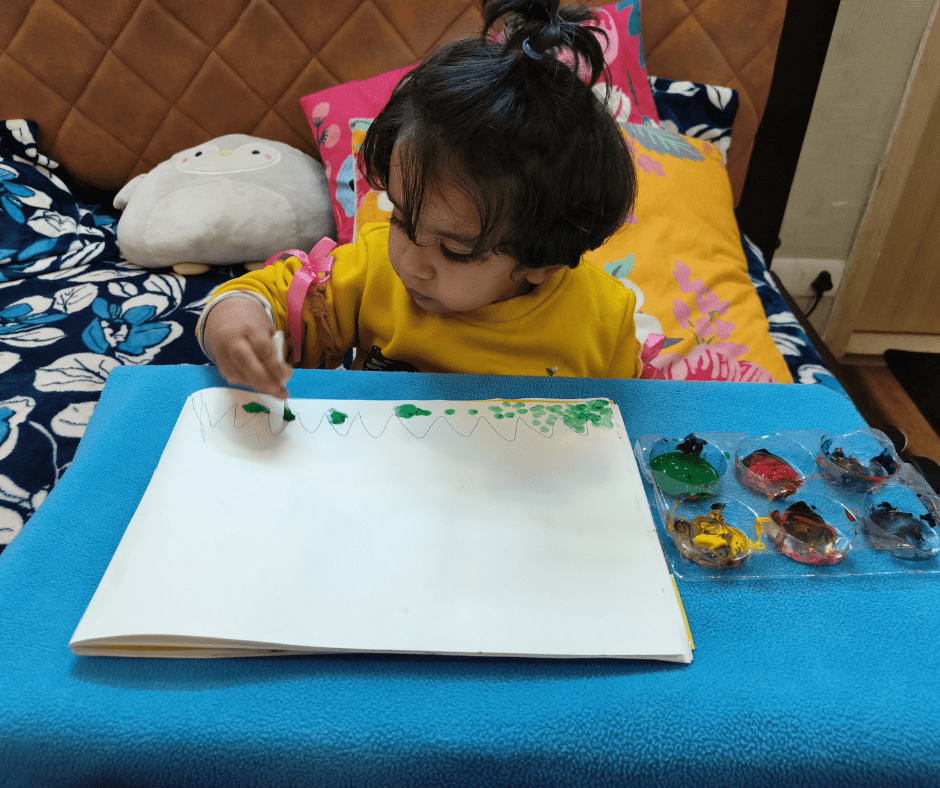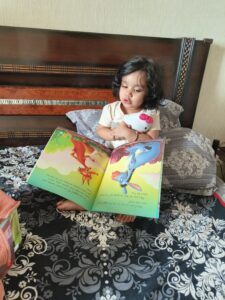Montessori education is a child-centered approach that emphasizes self-directed learning, hands-on experiences, and collaboration. Many parents are interested in implementing Montessori principles at home, but may feel overwhelmed or unsure of where to start. Here are some tips for setting up a Montessori-inspired learning environment in your home.
Tip#1: Create a Prepared Environment
The Montessori philosophy emphasizes the importance of a carefully prepared environment that promotes independence and exploration. This environment should be safe, aesthetically pleasing, and organized to support learning. Some key elements to consider when creating a Montessori-inspired learning space in your home are:
- Child-sized furniture and materials: Children should be able to easily access and manipulate materials, and furniture should be scaled to their size.
- Natural materials: Montessori classrooms often incorporate natural materials such as wood, glass, and textiles to promote a sense of calm and connection to the natural world.
- Order and simplicity: The learning environment should be uncluttered and organized, with materials arranged in a logical and visually pleasing way.
Tip#2: Focus on Practical Life Skills
Practical life skills are a cornerstone of the Montessori approach, as they promote independence, confidence, and self-esteem. In a Montessori-inspired home, children should have ample opportunities to engage in practical life activities such as:
- Cooking and food preparation: Children can help with meal planning, grocery shopping, and food preparation, which promotes healthy eating habits and teaches important life skills.
- Cleaning and organization: Children can learn to take care of their own belongings and help with household chores such as sweeping, dusting, and laundry.
- Self-care: Children can learn to dress themselves, brush their teeth, and take care of their own personal hygiene.
Tip#3: Offer Hands-On Learning Opportunities
Montessori education emphasizes hands-on learning experiences that allow children to explore and discover the world around them. In a Montessori-inspired home, children should have access to a variety of materials and activities that promote:
- Sensorial exploration: Children can engage in activities that stimulate their senses, such as exploring different textures, colors, and shapes.
- Math and literacy skills: Montessori materials are designed to help children develop foundational skills in math and literacy, such as counting, letter recognition, and phonics.
- Creative expression: Children should have opportunities to engage in creative activities such as art, music, and drama.
Tip#4: Foster Independence and Self-Directed Learning
One of the key goals of Montessori education is to foster independence and self-directed learning. In a Montessori-inspired home, parents can support this goal by:
- Allowing children to make choices: Children should be given opportunities to make choices about their own learning and activities.
- Encouraging exploration and discovery: Children should be encouraged to explore and discover the world around them at their own pace.
- Supporting intrinsic motivation: Parents should focus on building children’s intrinsic motivation by praising effort and progress rather than solely focusing on outcomes.
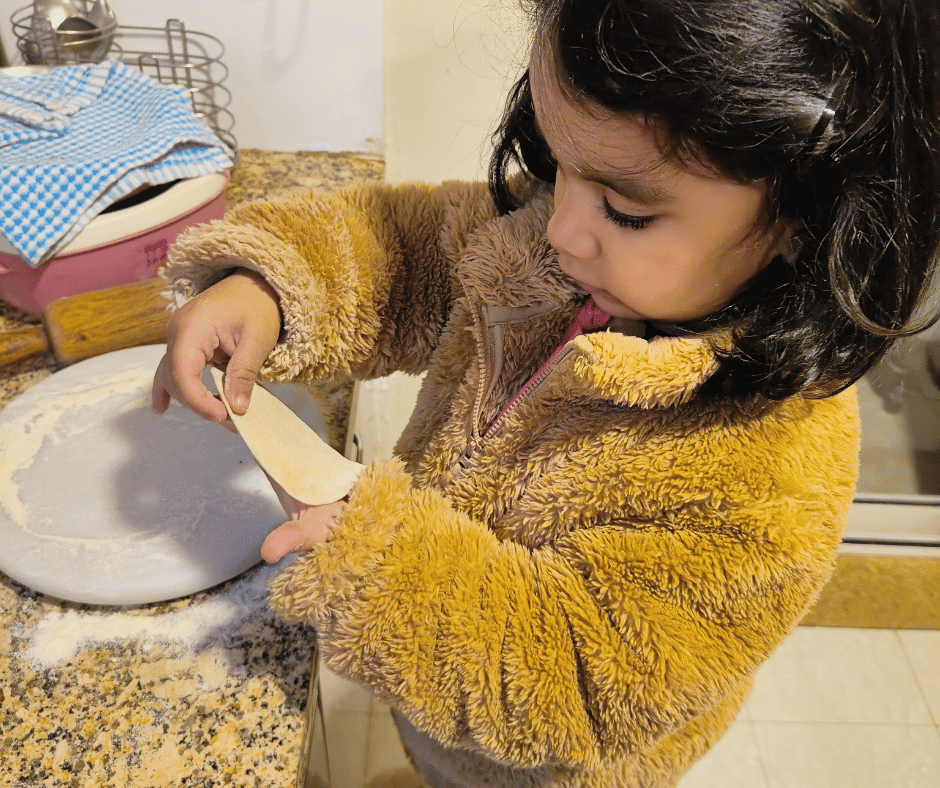
By creating a prepared environment, focusing on practical life skills, offering hands-on learning opportunities, and fostering independence and self-directed learning, parents can create a Montessori-inspired home that supports their children’s growth and development.
Also read, Why there is a rise in Montessori Education in India?
How to Incorporate Montessori Principles in your Daily Life?
Apart from setting up the Montessori environment at home, there are several ways parents can incorporate Montessori principles into their daily lives.
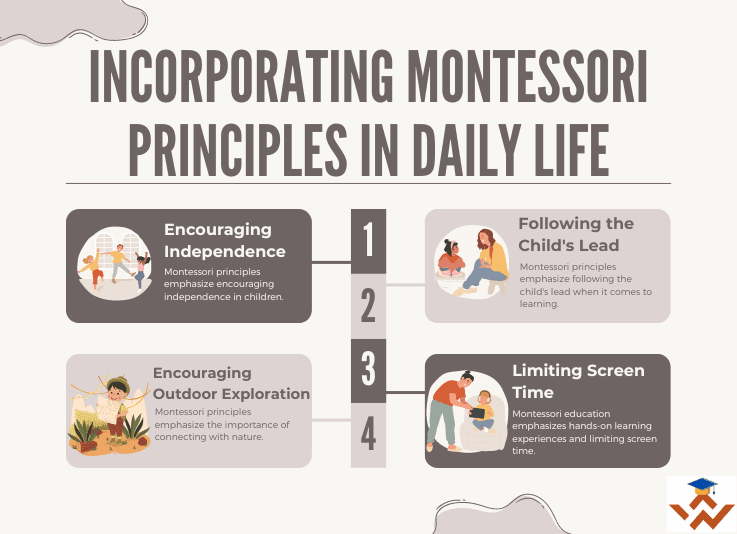
Step#1: Encouraging Independence
Montessori principles emphasize encouraging independence in children. Parents can encourage independence by letting their children do things on their own, such as tying their shoes, dressing themselves, or pouring their own drinks. This helps children build their confidence and self-esteem.
Step #2: Following the Child’s Lead
Montessori principles emphasize following the child’s lead when it comes to learning. Parents can follow their child’s interests and let them take the lead in their own learning. This can help children become more engaged and motivated to learn.
Step#3: Limiting Screen Time
Montessori education emphasizes hands-on learning experiences and limiting screen time. Parents can limit their child’s screen time and encourage them to engage in hands-on activities instead.
Step#4: Encouraging Outdoor Exploration
Montessori principles emphasize the importance of connecting with nature. Parents can encourage their children to explore the outdoors and engage with nature by going for walks, visiting parks, or participating in outdoor activities.
By incorporating these principles in their daily lives, parents can create a Montessori-inspired lifestyle that supports their children’s growth and development.
Conclusion
Implementing Montessori principles at home can be a rewarding experience for both parents and children. By creating a prepared environment, focusing on practical life skills, offering hands-on learning opportunities, and fostering independence and self-directed learning, parents can create a Montessori-inspired home that supports their children’s growth and development. By incorporating Montessori principles into their daily lives, parents can create a Montessori-inspired lifestyle that promotes independence, creativity, and a love of learning. Try incorporating Montessori principles with basic things available at home like I do and see your child grow and share your experience with us.
FAQs
- How can parents support Montessori at home?
Parents can support Montessori at home by providing a progressive learning environment that encourages independence, choice, and hands-on learning.
- What is the daily routine of Montessori at home?
A daily Montessori routine at home includes a progressive schedule with periods for self-directed play, practical life skills, outdoor time, quiet reading, and creative activities, all fostering independence and respect for the child’s natural pace of learning. It should be based on child’s interest and sensitive period and most importantly no forced compulsion. Let them explore.
- How can parents support Montessori at home?
Parents can support Montessori at home by creating a prepared environment, providing child-sized tools, encouraging practical life activities, offering choices, and allowing children to engage in tasks at their own pace to foster independence and learning.

